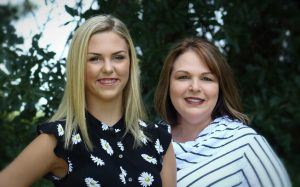
When Angela Kennedy adopted two children from the State of Louisiana at ages 2 and 4, she received very little information about their medical history. So she began to worry when her daughter, Grace, suffered asthma attacks at age 3. Kennedy took both children to be tested for allergies, telling the doctor she had no family medical history she could share. On the standard battery of skin allergen tests, “My son lit up like a Christmas tree,” Kennedy says, “but my daughter showed no response. Even so, the doctor put both of them on medication.”
As the years went by, Grace continued to suffer respiratory attacks seemingly at random, despite an active childhood, including practicing 15 hours a week for dance competitions. When Grace was 11, a new specialist decided to test Grace for autoimmune disorders. Grace tested positive for something wholly unexpected: cystic fibrosis.
“I couldn’t figure out how in the world my daughter’s cystic fibrosis could have gone undetected for so long,” says Kennedy. As head of the Department of Health Informatics and Information Management at Louisiana Tech University, Kennedy knows the importance of accurate medical recordkeeping. She was frustrated to find her doctor couldn’t share records electronically with Grace’s new specialist at Texas Children’s Hospital in Houston. Kennedy went to every practitioner who had treated Grace, gathering faxes and photocopies of Grace’s records to send to Houston. She even tracked down medical claims from when Grace was born, showing that Grace had suffered severe respiratory illness; had her doctors known that, they might have tested her earlier.
And there was one more surprise. In the records from the asthma specialist Grace had seen from ages 3 to 11, an error from her first visit was repeated over and over: “The mother states there is no family medical genetic history to be noted.” Kennedy was floored—she had never told them any such thing. That misleading sentence may have dissuaded doctors from testing Grace earlier for cystic fibrosis, which often has a genetic basis.
Within days of receiving all the paper-based information, her new specialists in Texas ruled out allergies, diagnosed asthma as a small component of the illness, and took Grace off all her medicines. They surmised that all the exercise had cleared her lungs of fluid and kept her alive, and it was only when she stopped that she experienced attacks. Her doctors had Grace track the number of hours she exercised with her Apple Watch, calculating that the optimal amount to assist in keeping her lungs clear is 12 hours a week. She now follows this regimen, along with daily compression therapies to aid circulation. Grace also keeps a diary of her diet on her iPad and monitors her patient portal (her new doctors now have Grace’s records on file electronically) to make sure that all the information in her record is accurate.
Grace and her mother count themselves lucky for being able to catch Grace’s illness when they did. But they contend that had they had access to electronic health records, the cystic fibrosis diagnosis would have surfaced much earlier.
Now 15, Grace has become a public voice for sharing personal health information and creating through high technology a seamless flow of information between patients and their caregivers. “Personal health information isn’t just changing my life,” she says. “It’s my saving grace.”
—Michael Blanding







